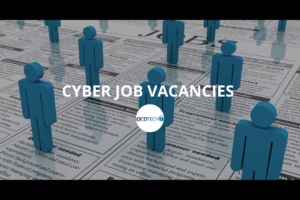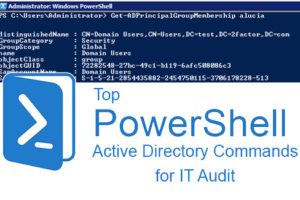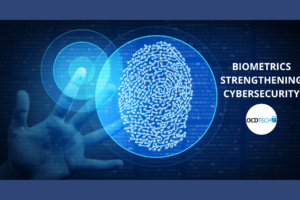Organizations today have a wealth of options to choose from when it comes to protecting sensitive data and earning customer trust. Two of the most widely adopted security frameworks are ISO/IEC 27001 and SOC 2. Although they differ in structure and geographic recognition, both aid businesses in developing credibility and lowering risk.
This guide answers the differences and common objectives between these frameworks — and provides clear guidance on deciding which fits your needs best.
What is SOC 2 and Why Should You Care?
SOC 2 stands for System and Organization Controls 2, which is an auditing framework that the American Institute of Certified Public Accountants (AICPA) maintains. SOC 2 is designed to assess how well a company protects customer and operational data, based on five Trust Services Criteria: security, availability, processing integrity, confidentiality, and privacy.
Rather than a certification, SOC 2 produces an attestation report. An independent CPA firm assesses whether the controls in place were suitable — and for SOC 2 Type II, whether those controls operated effectively over a period of time.
If your business is a technology provider, software-as-a-service organization (SaaS), or your business holds or hosts client information in the cloud, this framework is especially relevant to your organization. A SOC 2 report can help boost customer confidence, ease procurement reviews and give you an advantage with enterprise buyers.
What is the difference between SOC 2 Type I and Type II?
- Type I assesses the design of controls at a point in time.
- Type II reports on how consistently those controls are applied over a defined observation window (generally nine to twelve months).
Most organizations begin with Type I to demonstrate their baseline readiness and then progress to Type II as their security programs evolve.
What is ISO/IEC 27001 and How Does It Work?
ISO/IEC 27001 is an international standard for information security management systems (ISMS). It outlines an approach for handling data security through policies, risk assessments, and continuous review cycles.
ISO 27001 requires an external audit by an accredited certification body. If the audit shows they conform to the standard, they are awarded a formal certificate.
Companies with international operations or clients often adopt this framework in order to prove a structured and continually improving security posture.
What’s New in ISO/IEC 27001:2022?
Key changes in the 2022 update include:
- Decreased the total control objectives from 114 to 93 and re-grouped them into four themes
- Issued firmer recommendations for cloud-native environments and remote work
- Improved integration with other ISO frameworks such as ISO 9001 (quality) and ISO 22301 (business continuity)
Organizations that have already been certified under the earlier version have until late 2025 to make the move to the 2022 update.
What ISO 27001 and SOC 2 Have in Common
Although they differ in their framework, ISO 27001 and SOC 2 have some major similarities:
- Sensitive data protection and risk management are common priorities
- Both require documentation of policies, procedures, and testing of controls
- Each depends upon independent third-party assessment
- Both encourage a culture of continuous improvement and accountability
If you want to demonstrate trust with your stakeholders — be it investors, customers, or regulators, then either framework can offer significant confidence.
Key Differences Between ISO 27001 and SOC 2
Compliance Process
- ISO 27001 is a global standard, and it also comes with regular auditing by certification bodies
- SOC 2 depends on CPA companies carrying out customized evaluations according to your selected Trust Services Principles
Deliverables
- ISO 27001 gives you a certificate valid for 3 years with annual surveillance audits
- SOC 2 generates a report containing a description of the systems in place as well as the auditor’s opinion. There is no certificate
Recognition and Use
- ISO 27001 is globally accepted and a common requirement of large multinational companies
- SOC 2 is commonly issued in the U.S., particularly in Tech and SaaS industries
Time and Effort
- It takes 6 months to 1 year to prepare and implement ISO 27001
- The timeline for SOC 2 Type II is between 4 to 9 months depending on the review window and maturity of your controls
Scope Comparison: ISO 27001 vs SOC 2
- ISO 27001 is a broad organizational framework that covers technical, administrative and physical controls for data protection. It emphasizes continuous improvement and accountability throughout the organization.
- SOC 2 provides flexibility. You choose applicable criteria and define the scope of the audit accordingly. This makes SOC 2 particularly flexible for cloud-first organizations or those at the start of their more formalized security journey.
Crosswalk: Trust Services Criteria vs ISO 27001 Controls
Although the two frameworks serve similar purposes, direct mappings are not always feasible:
- SOC 2’s security principle overlaps significantly with many of the Annex A controls in ISO 27001
- SOC 2 availability criteria correspond to ISO’s resilience and uptime controls
- ISO 27001 by itself (without ISO 27701 — privacy extension) covers less than SOC 2 on privacy criteria
Having a clear sense of where they align can lead to good planning and less duplication.
Which One Is Right for Your Business?
The correct choice depends on your company’s growth strategy, client base, and industry standards.
Consider ISO 27001 if:
- You have clients outside of the US or regulatory needs spanning borders
- You need a framework that scales across the entire organization
- Your management emphasizes structured governance and process optimization
Consider SOC 2 if:
- A majority of your customers are from the United States, and they require a SOC 2 report
- You are required to demonstrate security efficacy to enterprise customers
- You work in software, tech, or other service-provider industries
Consider both if:
- You serve both global and domestic markets
- You aim to show both the implementation and maintenance of your controls
- You are gearing up for M&A activity, enterprise deals or new regulatory mandates
Making Both Frameworks Work Together
Organizations tend to implement both standards simultaneously to address wider requirements and save time.
Here’s how to make it simpler:
- Utilise common activities such as risk assessments, asset inventories, and access controls
- Use compliance platforms like Vanta or Drata to manage evidence collection across frameworks
- Begin with a readiness assessment to establish which controls apply to both frameworks
- Assign ownership on your team for continuous compliance
- Centralize documentation to efficiently update policies and track revisions
Is Dual Compliance Worth It?
Yes — if your organization is planning to expand into new markets, go after enterprise-level clients, or position itself as a security-first brand. Bundling ISO 27001 and SOC 2:
- Reduces duplication of audit activities
- Indicates a greater level of maturity to stakeholders
- Provides groundwork for future certifications or complex audits
While the combined approach requires more upfront investment, it usually delivers stronger ROI and long-term flexibility.
ISO 27001 and SOC 2 certifications are effective ways to verify your organization’s focus on security. Whether you are looking to expand a market, become compliance-ready, or build trust with partners, adopting one — or both — can give your company a competitive advantage.
If you’re on the fence, OCD Tech can help you evaluate your preparedness and chart a realistic path forward.




